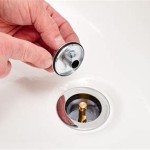Shallow Bathroom Sink: Maximizing Space and Style
The selection of a bathroom sink often involves balancing aesthetic preferences with practical considerations. Among the numerous options available, the shallow bathroom sink presents a particularly compelling solution for homeowners aiming to optimize space, especially in smaller bathrooms or powder rooms. This article provides an in-depth exploration of shallow bathroom sinks, examining their benefits, design considerations, installation nuances, factors influencing their cost, and maintenance strategies.
Understanding the Shallow Bathroom Sink
A shallow bathroom sink is defined by its reduced depth compared to traditional sinks. While standard sinks typically measure between 6 to 8 inches in depth, shallow sinks usually range from 3 to 5 inches. This reduced vertical dimension offers a significant advantage in bathrooms where space is limited. The design prioritizes functionality without sacrificing style, making it a versatile choice for various bathroom layouts.
The reduced depth of a shallow sink allows for greater accessibility beneath the sink. This is particularly beneficial for individuals with mobility issues, as it provides more legroom when using the sink while seated. Furthermore, the shallower design can contribute to a more open and airy feel in smaller bathrooms, preventing the sink from visually overwhelming the space.
The materials used in shallow bathroom sink construction are diverse, mirroring those employed in standard sink designs. Porcelain, ceramic, stainless steel, glass, and stone are all common choices. Each material offers unique aesthetic and functional properties. Porcelain and ceramic are known for their durability and ease of cleaning. Stainless steel provides a modern, sleek look while being highly resistant to stains. Glass sinks offer a contemporary aesthetic but may require more frequent cleaning to maintain their appearance. Stone sinks, such as marble or granite, impart a luxurious feel but can be more porous and require specific cleaning agents.
Shallow sinks are available in various mounting styles, including wall-mounted, vessel, and semi-recessed. Wall-mounted sinks free up floor space underneath, enhancing the sense of openness in the bathroom. Vessel sinks sit atop the counter, creating a focal point and adding visual interest. Semi-recessed sinks are partially embedded in the countertop, offering a balance between the integrated look of a recessed sink and the visual impact of a vessel sink. The choice of mounting style depends on the overall bathroom design and the desired aesthetic.
Advantages of Opting for a Shallow Bathroom Sink
The primary advantage of a shallow bathroom sink is its space-saving capability. In compact bathrooms, every inch of available space is valuable. A shallow sink allows for a more comfortable and functional layout, leaving room for other essential fixtures and accessories. The reduced depth prevents the sink from protruding too far into the room, minimizing potential obstructions and collisions.
Beyond spatial considerations, shallow sinks can enhance the aesthetic appeal of a bathroom. Their sleek, minimalist design complements modern and contemporary decor styles. The clean lines and reduced visual bulk contribute to a more streamlined and uncluttered appearance. The availability of various shapes, sizes, and materials ensures that a shallow sink can be seamlessly integrated into any bathroom design scheme.
Accessibility is another key benefit. As previously mentioned, the reduced depth provides greater legroom for seated users, making shallow sinks a practical choice for individuals with disabilities or mobility limitations. This feature can significantly improve the usability and comfort of the bathroom for all users.
Furthermore, shallow sinks can be more water-efficient than deeper sinks. The reduced depth encourages users to use less water when washing their hands or face, contributing to water conservation efforts. This can translate into lower water bills and a reduced environmental footprint over time.
Key Considerations When Choosing a Shallow Sink
When selecting a shallow bathroom sink, several factors warrant careful consideration. The first is the intended use of the sink. If the sink is primarily for handwashing, a smaller, shallower model may suffice. However, if the sink is intended for more frequent or demanding tasks, such as washing hair or filling containers, a slightly deeper or wider model may be more appropriate.
The size and shape of the sink should be carefully matched to the dimensions of the bathroom and the available countertop space. Measure the area where the sink will be installed to ensure a proper fit. Consider the overall proportions of the bathroom to avoid selecting a sink that is either too small or too large for the space. Various shapes, including rectangular, oval, and round, are available to suit different design preferences.
The material of the sink should be chosen based on its durability, ease of maintenance, and aesthetic appeal. Porcelain and ceramic are popular choices due to their resistance to stains and scratches. Stainless steel offers a modern, industrial look while being highly durable. Glass sinks can be visually striking but may require more frequent cleaning. Stone sinks provide a luxurious feel but can be more susceptible to staining and require specific cleaning products.
The mounting style of the sink should be selected based on the desired aesthetic and the available space. Wall-mounted sinks are ideal for maximizing floor space, while vessel sinks create a focal point. Semi-recessed sinks offer a balance between the two. The mounting style will also affect the plumbing requirements, so it's important to consult with a qualified plumber during the selection process.
The faucet selection is also crucial. The faucet's height, reach, and style should complement the sink's design and ensure adequate water flow. High-arc faucets are often paired with vessel sinks to provide ample clearance. Wall-mounted faucets can save countertop space and create a clean, minimalist look. Choose a faucet finish that matches the other bathroom fixtures for a cohesive design.
Installation and Maintenance
The installation of a shallow bathroom sink typically follows the same procedures as installing a standard sink, but it's important to adhere to the manufacturer's instructions. For DIY enthusiasts, a basic understanding of plumbing is necessary, including connecting water supply lines and drainpipes. Always shut off the water supply before commencing the installation.
Professional installation is recommended if you lack plumbing experience or if the installation involves complex modifications to the existing plumbing system. A qualified plumber can ensure that the sink is properly installed, leak-free, and compliant with local building codes.
Regular maintenance is essential to keep a shallow bathroom sink in good condition. Clean the sink regularly with a mild detergent and a soft cloth. Avoid using abrasive cleaners or scouring pads, as these can scratch the surface. For specific materials like stone, use cleaning products recommended by the manufacturer.
Periodically inspect the drain and faucet for leaks. Tighten any loose connections and replace worn-out washers or O-rings. Clean the drain regularly to prevent clogs. A mixture of baking soda and vinegar can effectively dissolve minor clogs. For more stubborn clogs, use a plunger or a drain snake.
For vessel sinks, pay attention to the seal between the sink and the countertop. Reseal the joint if necessary to prevent water damage. For wall-mounted sinks, ensure that the mounting hardware is securely fastened to the wall. Inspect the mounting brackets periodically and tighten them as needed.
Cost Considerations
The cost of a shallow bathroom sink can vary depending on the material, size, brand, and mounting style. Basic porcelain or ceramic shallow sinks can range from $50 to $200. Stainless steel sinks typically cost between $100 and $300. Glass sinks can range from $150 to $500, depending on the design and thickness of the glass. Stone sinks, such as marble or granite, can be the most expensive, ranging from $300 to $1000 or more.
Installation costs can also vary, depending on the complexity of the project and the plumber's hourly rate. Basic sink replacements can cost between $150 and $300. More complex installations, such as relocating plumbing lines or installing a new countertop, can cost significantly more.
When budgeting for a shallow bathroom sink, consider the cost of the faucet, drain, and other accessories. High-quality faucets can range from $100 to $500 or more. Drains typically cost between $20 and $50. Accessories such as soap dispensers and toothbrush holders can add to the overall cost.
To save money, consider purchasing the sink, faucet, and accessories as a package. Many retailers offer discounted prices on bundled products. также comparison shop online and at local home improvement stores to find the best deals. Consider installing the sink yourself if you have plumbing experience, but be sure to follow all safety precautions and consult with a professional if needed.

34 Shallow Vessel Sink

Small Sqaure Vessel Sink Shallow Square Concrete Basin

Eden Bath 22 In Shallow Wave Concrete Rectangular Vessel Sink Dark Gray Eb N008dg The Home Depot

Green And Clean Ecofriendly Bathroom Sinks

Shallow Trough Vessel Sink Bathroom Vanities Concrete

Shallow Undermount Bathroom Sink Addicted 2 Decorating

Shallow Pan Vessel Sink Dreamcrete Studios

Shallow 440mm Countertop Rectangular Bathroom Basin Torre

Fontaine Shallow Square Porcelain Bathroom Vessel Sink Com

Sleek 800mm Countertop Rectangular Stone Resin Basin Solo
Related Posts







